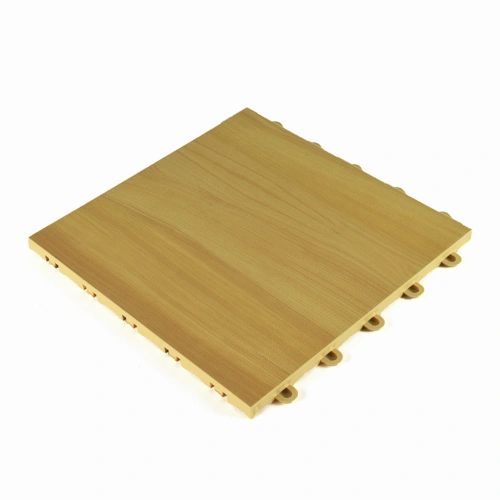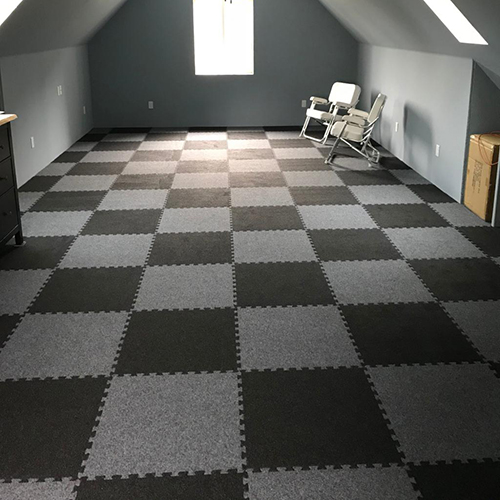How To Measure Flooring: Square Or Linear Feet & Interlock Loss
Related Product: Max Tile Raised Floor Tile 5/8 Inch x 1x1 Ft.
Considerations for Measuring Flooring
Room Dimensions
Room dimensions are simply a measurement of how long and wide a room is. Generally the width will be noted first, followed by the length. For instance if you have a room that is 10 feet wide by 12 feet long, it will likely be referred to as a 10x12 room.
Square Feet
Once you have your room dimensions, it’s easy to calculate the square feet of the room by simply multiplying the width times the length. So that 10x12 foot room would cover 120 square feet. Be aware that square feet can be abbreviated in many different ways, including: sq. ft., sqft and SF.
If you have an irregularly shaped room, you’ll want to take into account the space lost by protruding walls, cabinets, etc. This will help you avoid purchasing too much flooring.
Some flooring such as rolled rubber flooring is priced by the square feet, but is actually measured by the linear foot.
Linear Feet

Linear feet, (commonly abbreviated at LFT or LF) is something you need to keep in mind if you plan to purchase rolls of flooring as this is not the same as square feet. Flooring that is sold by the linear foot is referring to the length of the roll rather than the amount of coverage area. For instance marley dance flooring generally comes in 5.25 feet wide rolls and is commonly sold by the linear foot. In this instance, each linear foot would equal 5.25 square feet of coverage.
If you wanted to cover that same 10x12 foot room with marley flooring, you’d probably need 24 linear feet of marley flooring, which would be equivalent to about 126 square feet. That is 6 square feet more than the area of the room, which means some custom trimming of your flooring will need to take place at the time of installation.
Interlock Loss
If you are looking to buy interlocking flooring tiles or mats, you may discover that a flooring calculator will determine you need more flooring that you think is necessary. That is because the flooring calculator may be accounting for interlock loss.
What is interlock loss, you ask?
Interlock loss is the term used to describe how much length and/or width is sacrificed during the process of interlocking two pieces of flooring together. This happens most often with any type of flooring with jigsaw puzzle style edges. The size of the puzzle style interlocks determines how much interlock loss will take place.

For instance, the Geneva Rubber Tile Black 3x3 Ft will have significantly more interlock loss than the SupraTile T-Joint Tiles due strictly to the fact the interlocks on the Geneva tiles are 2.25 inches deep while the SupraTile interlocks are only 1/4 inch deep. As a general rule, you can count on the interlock loss being equivalent to the depth of the interlock.
Going back to that 9x12 foot room, if you plan to cover the room with 3x3 foot Geneva tiles, instead of needing 12 tiles like one might think, a flooring calculator will determine you actually need 18 tiles to account for the 2.25 inches of interlock loss per tile. (This would result in some wasted material as the perimeter tiles would need to be cut to fit.)
With that being said, some puzzle mats or tiles utilize a universal interlocking system which can help reduce waste.
Types of Interlocking Flooring
Universal Interlocks
Universal interlock systems allow you to connect tiles together with the tiles facing in any direction because the interlocks on all sides are identical. This allows you to use the “scraps” from tiles you cut along other edges as well. In some cases, it can help reduce the number of full tiles you need to purchase.
Snap or Click Together Flooring
For interlocking tiles or planks without interlock loss, look for those with a snap together or click together design. These modular style flooring units such as Max Tile Raised Floor Tiles or StayLock Tiles generally do not include the interlocking tabs or loops in the size of the unit and when connected together appear to have straight edges.

When installing this type of product wall to wall, however, you may need to either cut the connector loops off of two sides of the flooring installation. For island installations, the use of ramped border strips is advised.
If you have any additional questions on how to measure flooring, feel free to give Greatmats’ knowledgeable sales associates a call. They’ll be happy to walk you through the process and offer advice.
